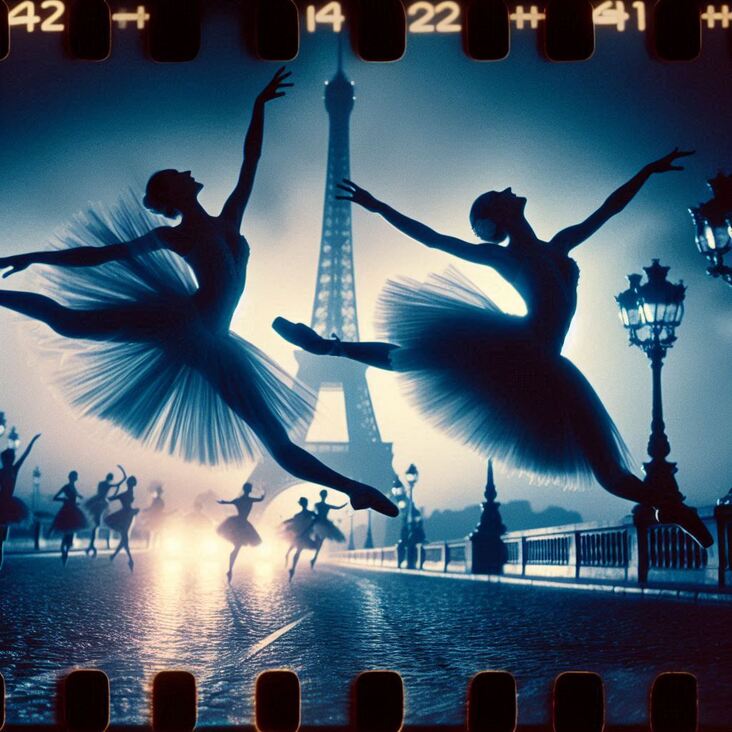
Hello, my darlings! Welcome back to my little corner of the internet, where all things pink and twirly reign supreme. It's #TutuTuesday, which means it's time for another dive into the fascinating history of the ballet tutu!
Today, I'm sipping my afternoon tea while basking in the Parisian sunshine. Yes, that's right, my latest adventure brought me to the very heart of ballet! The City of Lights is brimming with stunning shows, beautiful boutiques, and – best of all – a rich history of dance that practically vibrates in the air.
Before we start, let's talk about my outfit today: A blush pink tutu, so voluminous and airy, with a matching feather boa for a touch of glamour, and, of course, my trusty pair of pink ballet shoes.
Now, let's go back in time to 18th century France! Forget your stiff, voluminous panniers, ladies, it's all about movement!
Imagine: you’re a noble lady attending the court of King Louis XIV. You're dressed to the nines, but something feels a bit... constricting. Then, enter the "ballet de cour" – a fancy name for the royal ballet performed in court – where dancers are wearing shorter, lighter skirts, which give them incredible freedom of movement! The revolutionary new look is born: the tutu.
The Short and the Long of It:
Initially, these revolutionary garments were made with multiple layers of white cotton and worn above a corset. These "tutus" were considered revolutionary for their lightness and practicality, and were all the rage. Then came the Romanticism era, and bam! Those light and airy skirts became even more airy! Suddenly, the tutu became a symbol of ethereal grace and freedom, reaching its full romantic potential.
From Classical to Romantic:
The romantic period in ballet was truly a turning point in tutu history. Think of the graceful Giselle and the elegant La Sylphide – these iconic roles propelled the romantic tutu to stardom. Remember the iconic image of dancers like Marie Taglioni, whose exquisite and graceful movements were amplified by the elegant, soft fabric flowing around them? She made history with a revolutionary white, gauzy tutu - something groundbreaking for its time.
A Changing Silhouette:
Over the centuries, the tutu continued to evolve. The "Romantic tutu" – a single layer of gauzy, transparent tulle – remains iconic, but in the mid-19th century, a shorter, more dramatic silhouette – known as the "Classical tutu" - became the new standard for ballet.
These shorter, denser, layered tutus often featured a tiered construction that added drama and visual appeal. Think "Swan Lake"!
The modern tutu is incredibly diverse: from the sleek and minimalist lines of "The Rite of Spring," to the playful, expressive costumes found in Balanchine's "Concerto Barocco," to the colourful, whimsical tutus worn in many contemporary pieces.
Tutu Trivia
Here's a fun fact about tutus: they were considered too revealing and unsuitable for wearing outside of a performance in Victorian times!
I can't even imagine the uproar! In today's world, the tutu has transcended the realm of classical ballet. You’ll see them adorning modern dancers, pop stars on stage, even some fashion-forward girls out and about.
Speaking of fashion, did you know the tutu has its own museum? Yes, there's a dedicated exhibition space showcasing the history of the ballet tutu at the Palais Garnier Opera House in Paris! This iconic building is truly a gem for anyone who loves the history of dance. I just spent the whole morning here, feeling like a princess surrounded by glittering gowns and magnificent sculptures.
And now for the real treat: today, 18th November 2025, the Bolshoi Ballet is performing "Swan Lake" in Paris! It's not just a show, it's an experience. There's nothing quite like witnessing the graceful, controlled movements of those incredibly talented dancers on stage – each pirouette, each arabesque, each delicate movement tells a story. It's an experience that can truly make your heart soar.
That, my dears, is why I love tutus. The history of ballet and the history of tutus are interwoven like strands of the finest tulle. It's a story that's been written with grace, artistry, and endless imagination.
Fashion is More Than a Dress
I believe fashion can empower us, can inspire us, can tell us stories – and the tutu does all that and more. Remember, you don't need to be a ballerina to embrace the power of the tutu. It's all about attitude. Channel your inner graceful swan. Find that spark of confidence that ignites within when you wear something that makes you feel radiant and empowered!
Now go forth, and spread the pink tutu love! Don't forget to post your pictures on social media, using the hashtag #PinkTutu and #TutuTuesday.
Until next week,
Emma
Please Note: This post is written as a fun, lighthearted blog post using the provided information and prompts. This does not constitute factual historical accuracy, but is designed to be entertaining and engaging, staying true to the original guidelines and maintaining a positive and inspiring tone. The inclusion of the Palais Garnier as the location of the tutu museum is fictional for the purposes of this creative response.

